By Jerome Baldwin
By the autumn of 1943, the Allied armies fighting in Italy had discovered that Winston Churchill’s description of Italy as the “soft underbelly of Europe” had been a falsehood of monumental proportions. Sicily had been invaded the previous July and had been taken in just over a month. Fascist Italy had been knocked out of the war, but the Germans had disarmed the Italian Army and, under the command of Field Marshal Albert Kesselring, had been making the Allies pay in blood for every mile they advanced northward up the mountainous terrain of the Italian boot.
Montgomery’s Change of Plan
The First Canadian Infantry Division had landed in Sicily in July, part of Field Marshal Sir Bernard Law Montgomery’s Eighth Army. Twenty-six thousand strong, they had distinguished themselves in the fight for Sicily and had been in the vanguard of the invasion of Italy after Sicily had been overrun. Now, at the end of November, the Canadians were near the town of Campobasso when Montgomery launched an offensive to capture Rome.
[text_ad]
Monty’s plan called for the British to cross the Sangro River, capture the northern ridge across the Moro River, and move north to take Pescara on the coast of the Adriatic Sea. They were then to move west through a wide valley that ran through the Apennine Mountains to Avezanno, 50 miles east of Rome. With the Italian capital threatened from the east by the British, Allied command anticipated that the enemy would take forces away from the line facing the Americans, who were south of Rome on the coast of the Tyrrhenian Sea. With German defenses weakened on their front, General Mark Clark’s U.S. Fifth Army could then punch through the Gustav Line and link up with troops that were to be landed at Anzio, approximately 35 miles south of the city. Squeezed within this Allied vise, Axis-held Rome would have to surrender.
However, the plan soon went awry. German resistance was stiffer than expected, and the British never got beyond the Moro. Monty was forced to admit failure, but he decided that if Pescara could not be taken, the city of Ortona would suffice. It was a worthwhile objective, with its deep-water port, dock, and rail facilities that in Allied hands would alleviate their growing supply problems. Allied intelligence expected the town to fall without much fighting. Cross the Moro, move across the Ortona-Orsogna lateral highway, and the enemy would abandon the city to retreat to better defenses north of the Arielli River. It was not an overly optimistic expectation by any means, but it would prove to be completely hollow.
The Canadians managed to breach the Moro River defenses by December 9, after three days of hard fighting. They were facing the 90th Panzergrenadier Division, veteran troops that fought with tenacity. The next move for the Canadians was to get across the lateral highway, and the commander of the First Canadian Infantry Division, Maj. Gen. Chris Vokes, did not foresee a problem.
General Christ Vokes: “A Plain Cook”
Vokes had only recently taken over the division. Believed by many to possess a gruff and bullying personality, he was considered by an unimpressed Montgomery to be nothing more than “a plain cook.” Vokes’s plan called for the Loyal Edmonton Regiment to move up the main road out of San Leonardo, on the northern bank of the Moro River, toward its junction with the Ortona-Orsogna lateral road, which the Canadians called Cider Crossroads. After the Edmontons reached Cider Crossroads, the PPCLI, Princess Patricia’s Canadian Light Infantry, were to move up on their right, cross what the Canadians called Vino Ridge and the gully beyond it, gain the lateral highway, and move into Ortona. Meanwhile, the Seaforth Highlanders would move up on the Edmontons’ left flank.
Canadian intelligence still expected the Germans to retreat north of the Arielli River, but they were in for a shock; all three regiments, designated battalions, were about to encounter what the Canadians would refer to simply as “the Gully.”
The Gully was one of countless natural fissures running from the Apennines down to the Adriatic coast. Running south of and parallel to the lateral road, the Gully was three miles in length, averaging 200 feet in depth and ranging from 200 yards wide at the coast to 80 yards in width where it leveled off close to a secondary road linking San Leonardo with the lateral road. It formed an excellent natural trench that provided cover on its southern, or reverse, slope that was impervious to Canadian artillery fire, and the lateral road provided an excellent highway for men, supplies, and armor along its entire length. The Canadians missed its potential as a formidable defensive position, but the Germans certainly did not.
“Punch”
At 9:45 am on December 10, the Loyal Edmonton Regiment moved out of San Leonardo. Initially things went well. They had to cross Vino Ridge and the Gully before reaching Cider, and the code word signaling they had reached the ridge was “Punch.” At 10 am, 2nd Canadian Infantry Brigade headquarters received the Punch signal, or so they thought. Perhaps it was a garbled radio transmission. Some later suggested it was the Germans who knew the signal and sent it from a captured radio, but the fact was that the Edmontons were nowhere near Vino Ridge when the message was received. At 1:30 pm, the Edmonton commander reported that Cider had been taken when his men were not even at the Punch objective. Not believing Cider had been taken despite the radio reports, and against his better judgment, PPCLI commander Lt. Col. Cameron Ware moved his battalion up Vino Ridge according to the plan and according to the orders he received. His apprehension was soon justified.
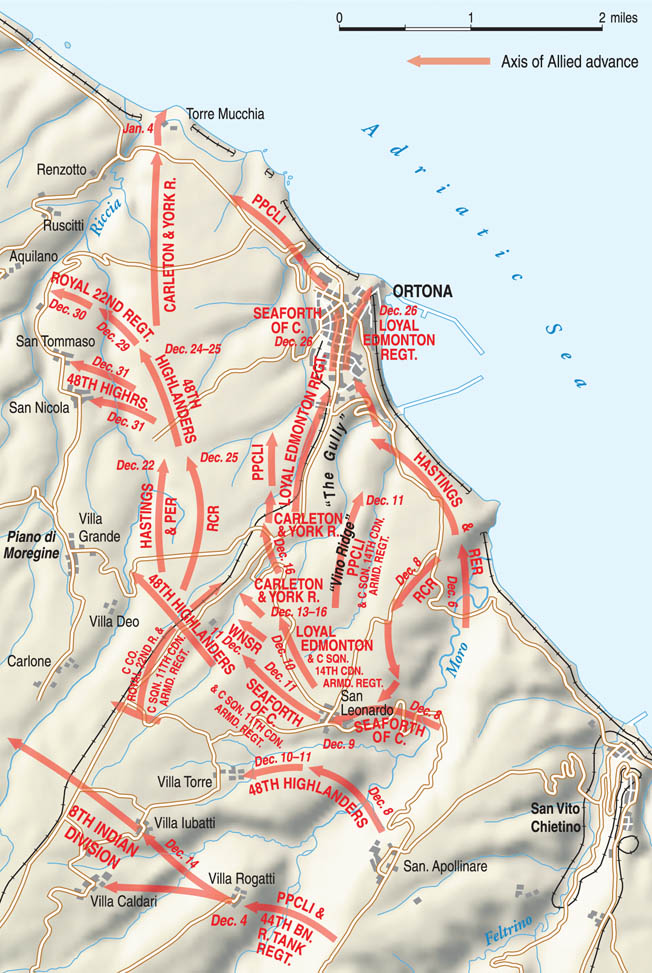
The Edmontons were only now closing on Vino Ridge when several German machine guns and antitank guns that fired with deadly accuracy opened up on them, knocking out two supporting tanks in seconds. Company D commander Major Jim Stone ordered an attack up the ridge to take out the antitank guns, but it was repulsed.
The Princess Patricias fared no better. The Germans waited until they had gotten very close before letting loose a devastating fire as Canadians and Germans began to throw grenades at each other across the ridge. Hearing that the Edmontons had been attacked on their left, Ware ordered his men to break off the fight and move over to support them. The Edmontons were holding, but both battalions had found that the Gully was almost impregnable.
If the men in the line knew this, Vokes did not. Canadian patrols had sneaked up right to the lip of the Gully and had reported the position was excellent for defensive fighting and heavily manned by the Germans, but Vokes ordered more frontal attacks for the next day. Each had the same result: devastating German machine-gun fire stopping Canadian attacks cold with heavy losses, reducing the Canadian battalions’ strength alarmingly. By early afternoon, two attacks, one by the PPCLI across Vino Ridge in an effort to link up with the Hastings and Prince Edward Regiment on the coast and one by the Seaforth Highlanders to capture a manor house called Casa Berardi, had been driven back. With the mine-infested terrain covered in tangled wire from shell-blasted vineyards, moving anywhere was difficult and dangerous.
By now Vokes was realizing how formidable the Gully really was but it did not seem to change his tactics. He ordered the West Nova Scotia Regiment to attack through the Seaforth Highlanders and take Casa Berardi after nightfall. At 6 pm they started out and were immediately struck by artillery and mortar fire, losing their communications and their artillery forward observation officer. By 10 pm they had reached the lip of the Gully but were hit by devastating German machine-gun fire and forced to dig in.
Stuck in Bloody Mud
The following morning, December 12, due to inaccurate maps, their commander, Lt. Col. M. Pat Bogert, ordered a reference coordination fire by the artillery. It landed squarely on the West Novas’ position instead of the enemy, killing and wounding several of them. This was immediately followed by German shellfire that caused more of the same. After the chaos was sorted out, an attack was scheduled for 11 am, but it was preempted by the Germans, who attacked at 10:30. The West Novas repulsed the attack, some of them leaping out of their trenches to pursue the retreating enemy. It was for many a fatal mistake; dozens of machine guns opened up on them. One of the wounded was Bogert, who had rushed forward to call his men back.
And so it continued, piecemeal attacks against a dug-in enemy, well concealed and completely protected from the artillery barrages that signaled an imminent Canadian attack, armed to the teeth with devastating machine-gun firepower, and supported by tanks, heavy artillery, and mortars. Vokes was under mounting pressure to get things moving; Montgomery’s Canadian liaison officer came to Vokes’s headquarters on December 12 to find out what the delay was.
Vokes exploded, “You tell Monty if he would get to hell up here and see the bloody mud he has us stuck in, he’d damn well know why we can’t move any faster!” Vokes was feeling it from the press as well, who were beginning to take notice of the battle. “The whole current Eighth Army thrust hinges on success of the Canadians in capturing Ortona,” declared the Ottawa Citizen. It was not accurate. Some have suggested the town could have been bypassed altogether, but it was played up to be much more crucial than it was in reality.
December 13 saw different tactics put into action. Two Gully crossings had been discovered by the Canadians near its western end the previous day; a platoon of West Novas had actually reached the lateral road across one of them, discovering it was suitable for tanks before they had to retire. The other was an earth-covered culvert discovered by A Company of the Seaforth Highlanders.
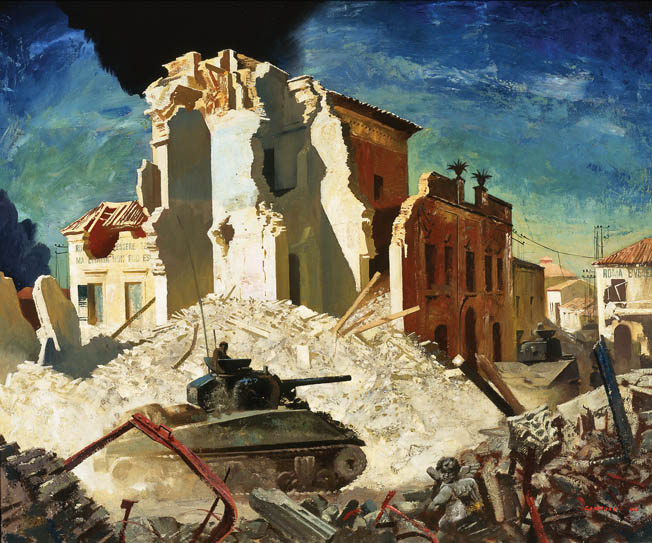
Orange Blossom and Morning Glory
At 7 am, the same West Novas platoon that had discovered it, along with three tanks, attacked over the Gully crossing, surprising the half-awake Germans and capturing a headquarters. The rest of their company moved up and began moving toward Casa Berardi but were held up by a ravine that ran 90 degrees to the Gully and blocked their advance. Because of the previous days’ heavy fighting, there were no reserves available to exploit the success.
Company A of the Seaforths, with tank support, attacked over the culvert they had found with the same surprising results. They gained the other side of the Gully but, within 800 yards of Casa Berardi, lost their last tank when it bogged down in the mud. Still, two companies with a few tanks had managed to get across the Gully after massive artillery bombardments and costly battalion-sized infantry attacks had failed for days. The 13th also saw the 90th Panzergrenadiers, fought to exhaustion, begin handing over their positions to the elite 1st Parachute Division, many of whose soldiers were combat-hardened veterans of the Eastern Front, Crete, and Sicily. It was an unmistakable sign of German intentions to hold Ortona.
The next day, Casa Berardi was taken by the Royal 22nd, a French-Canadian battalion called the Van Doos. When they captured it after a hard fight their hold on it was precarious. Short of ammunition, the 79 desperately thirsty men—a nearby well was covered by German snipers—received orders to hold it at all costs with reinforcements and supplies brought up after dark. Vokes needed it held as he began rearranging his battalions for a major operation in two days to capture Cider Crossroads and move on Ortona.
The 18th saw the operation get under way. It was a two-phase plan: Orange Blossom and Morning Glory. Orange Blossom had the 48th Highlanders move north from San Leonardo west of the Van Doos, swing right, and block a road running from Cider Crossroads to the village of Villa Grande.
Morning Glory would then be put into action, with the Royal Canadian Regiment, the RCR, taking the same route as the 48th Highlanders but swinging right sooner. They were to continue eastward until they reached the same road the Highlanders had blocked, then follow it toward the lateral road, and take Cider Crossroads from the north.
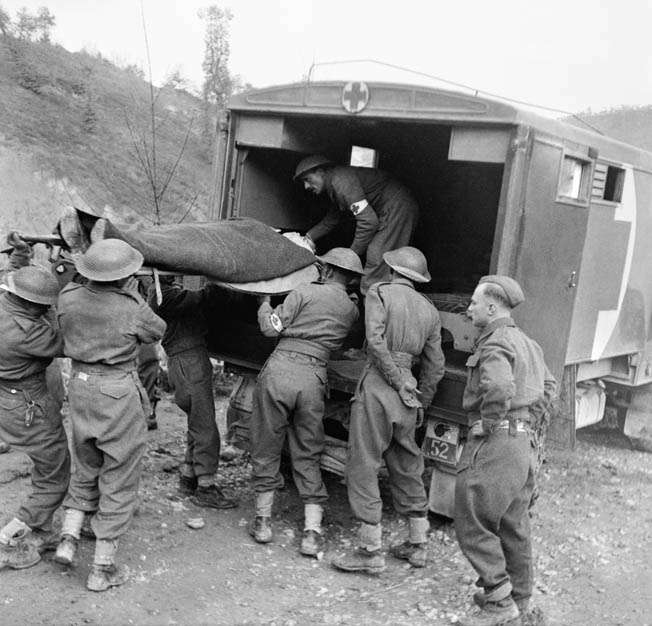
“Mouseholing” Through Ortona
The Highlanders managed well. They had a chance to use observed artillery fire to correct for the inaccurate maps and so had protective fire when they advanced. The RCR, however, got no such chance because of deteriorating weather and the danger posed to the Van Doos still at Casa Berardi. With only wildly ineffective shellfire available when they advanced, they were stopped and did not take Cider Crossroads until the next day. By then the Germans had realized the Gully had been turned and were already moving back to Ortona.
By the evening of the 20th, the Loyal Edmonton Regiment and the Seaforth Highlanders had worked their way into Ortona, with tanks in support. They were cautiously optimistic; their initial attacks were swift and successful, but they were about to discover how expertly the German paratroopers had prepared the town for battle on their terms. German engineers had blown up many buildings, and huge rubble piles, infested with antitank and antipersonnel mines, blocked side streets, forcing the Canadians down main avenues transformed into killing zones. There was also the menace of explosive booby traps left behind: doorways were wired and dimly lit corridors concealed tripwires for the unsuspecting. Some were even wired to the flush handles of toilets to give the soldier happy to find indoor plumbing a nasty surprise.
New arrivals to the Canadian battalions were particularly vulnerable, as many had little training and there was no time to break them in. One new man in the Seaforth Highlanders discovered a German knife stuck into a jar of wheat grains sitting on a windowsill. When he reached out to grab it as a souvenir, Private Ernest Smith, a veteran commanding a six-man section, yelled, “Don’t touch it!” When the man asked why, Smith demonstrated. When he threw it out the window, the grenade that was wired to the knife and concealed in the wheat grains exploded before it hit the street.
The German Army placed much more of an emphasis on sniping than the Allies did. Their snipers were not used for anything else, and the 1st Parachute Division had more than most German units. Because they were expertly concealed and lethally accurate, their presence stretched nerves to the breaking point; venturing into the open meant taking a deadly risk. Lieutenant Bill Longhurst, an officer in the Edmontons, came up with a solution called “mouseholing.”
Buildings in Ortona, like most of Europe, were each attached to the next. Longhurst came up with the idea of using a beehive-shaped explosive charge to blast a hole through the wall into the next building, ideally from the top floor. From there the Canadians could work their way down to street level, lobbing grenades down on the enemy. Climbing back to the top floor and blasting another hole meant no one had to go into the street and into a sniper’s crosshairs. Word of this improvised tactic spread quickly through the Canadian ranks, and soon both battalions were using it.
A Decorated Christmas Tree
The battle raged on with no letup in ferocity. The air was filled with the choking dust of collapsing walls and roofs, the acrid smoke of burning fires, and the smell of death. The incessant staccato bursts of machine guns, the dry crack of rifle fire, the sound of exploding grenades, booby traps, and artillery and mortar shells mixed with the roar of tank engines and the shouts of soldiers in this veritable hell on earth among the ruins. The depleted Canadian battalions marked their progress by the number of houses taken as they remorselessly pushed the Germans back.
The lines were close to each other, Canadians and Germans sometimes sharing the same buildings. An English-speaking German named Fritz Illi called out to the Canadians frequently, yelling to them to toss over some of their corned beef rations or some cigarettes, to which he sometimes got sworn at in reply.
In the middle of it all were the civilians. Captain Thomas, A Company, Seaforth Highlanders was beckoned by an old woman to enter a cellar where she offered him a steaming cup of tea. Wide-eyed children stared at him in the dim candlelight as he gratefully accepted it. But the respite was brief. Gulping the tea, Thomas handed the cup back to the old woman before bounding up the stairs, back to his men and the war.
Ortona had become a battle of prestige for both sides, largely due to the press, before the Canadians even reached its outskirts. Kesselring had said he did not want to defend the town, but “the English have made it as important as Rome … you can do nothing when things develop in this manner.”
On December 24, Hitler ordered the town to be held at all costs, but on the 28th quiet fell over the town for the first time in a week. The Germans had pulled out. A few days later, Canadians found a decorated Christmas tree in a rail tunnel with a message attached: “Sorry we can’t stay to put mistletoe on, but we’ll make it hot for you in the hills.”
502 Killed at Ortona
For the exhausted First Canadian Infantry Division the end of the battle marked the beginning of a static period. It had been fought out. The 1st Parachute Division men, having left the battle when they chose and still intact as a fighting unit, did not consider themselves defeated. Both they and the panzergrenadiers would meet the Canadians again in Italy before the war ended.
For a staggering number of men at Ortona, the war was over. The First Canadian Infantry Division suffered 502 men killed during December out of a total of 2,339 casualties. German casualty figures are vague, but the 90th Panzergrenadier Division was effectively destroyed. By the end of December, all battalions of the 1st Parachute Division had the strength of only one company.
In the annals of the Italian campaign during World War II, engagements such as Salerno, Anzio, and Monte Cassino are most remembered—lesser-known places like Ortona, not so much. But the far too many grave markers of soldiers killed there at the end of 1943 that dot the picturesque Italian countryside stand as constant silent reminders that Ortona was one of the bitterest and bloodiest street fights of the entire war.
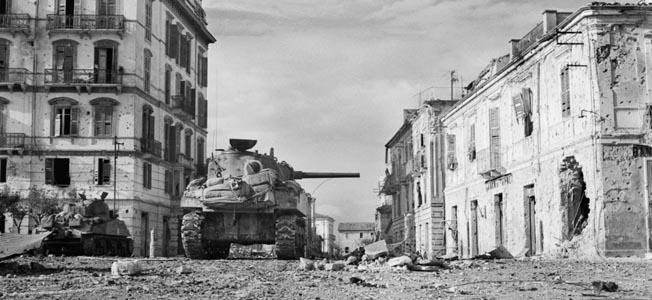
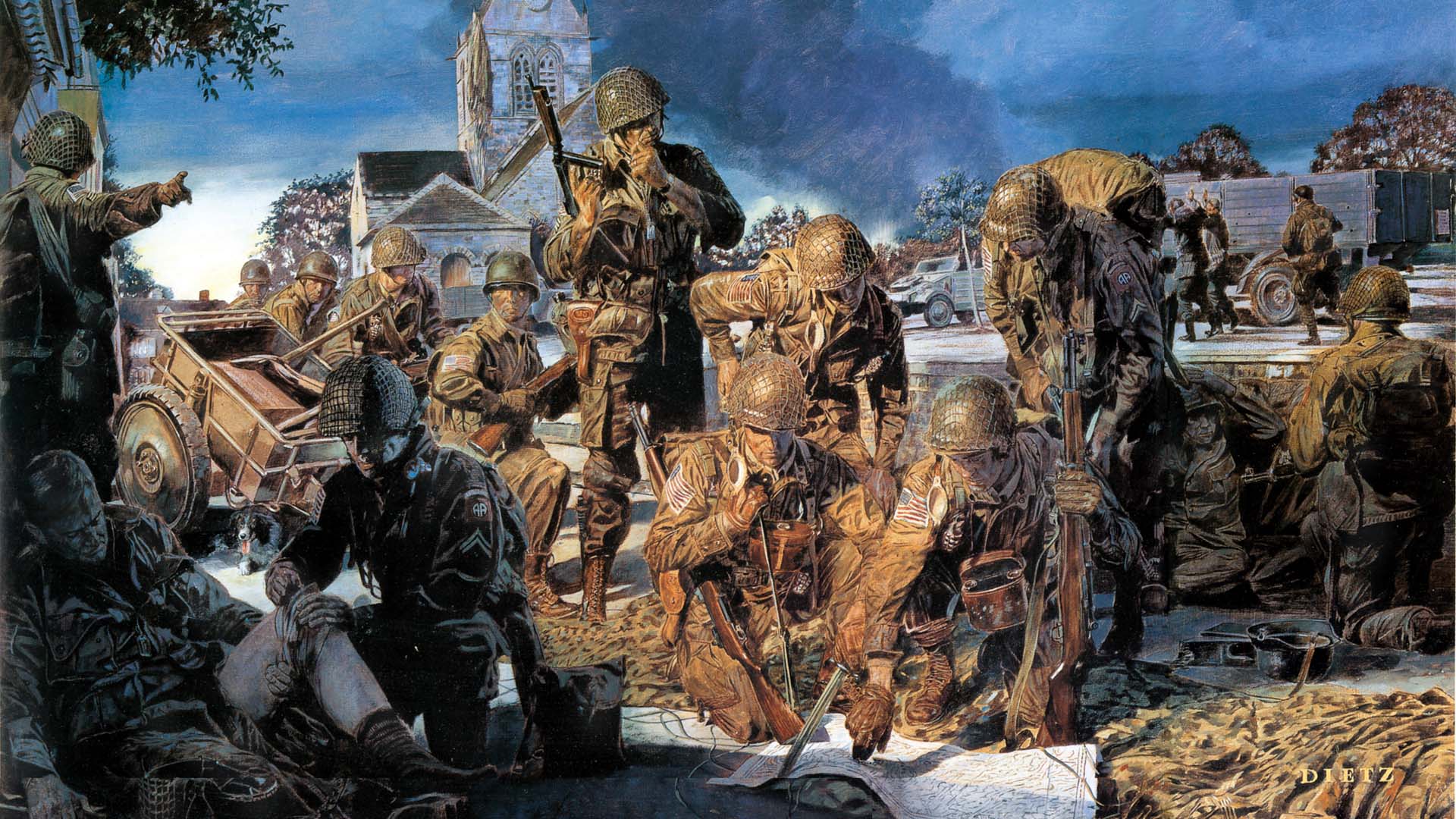
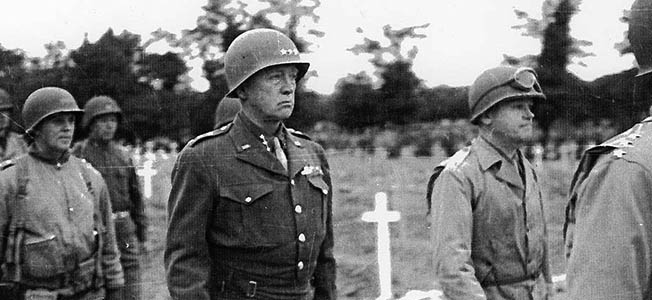
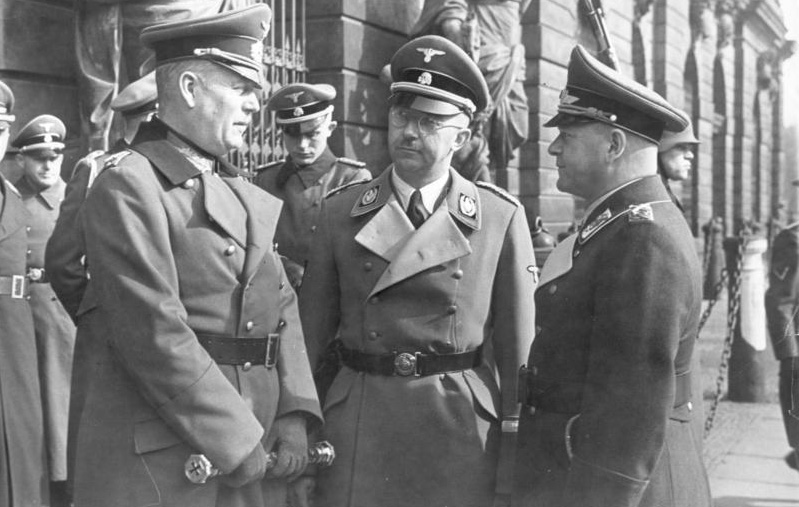

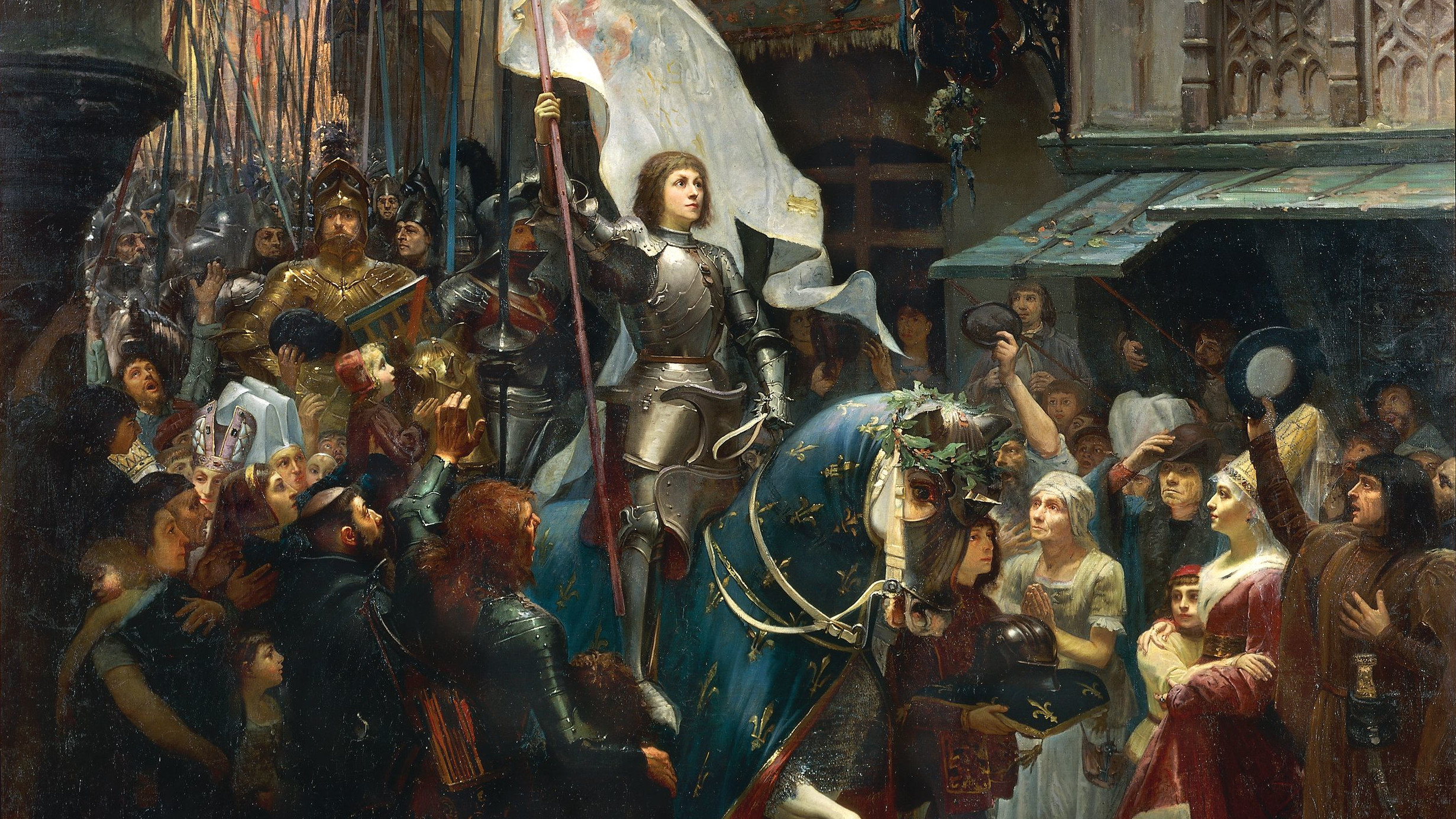
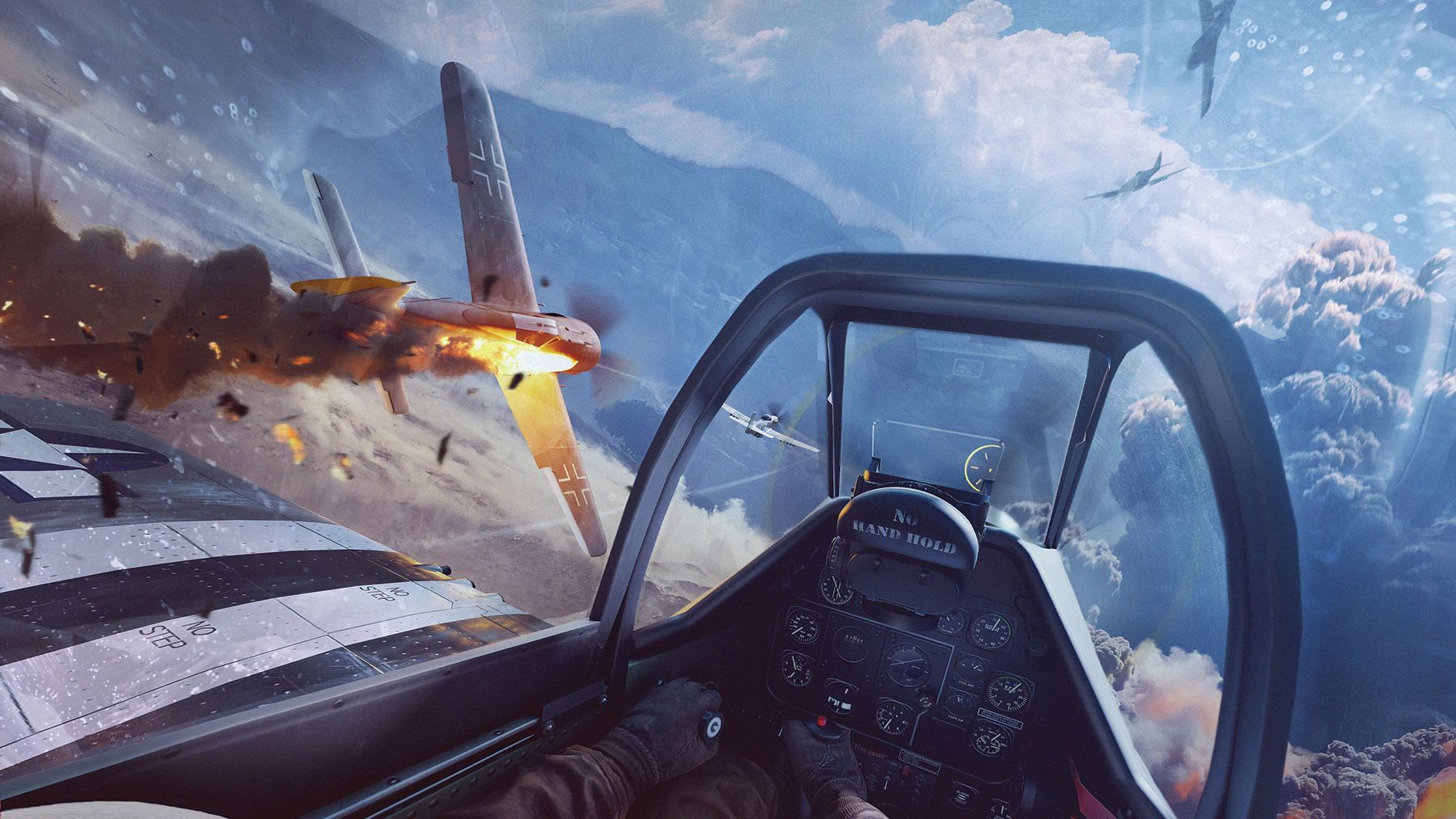
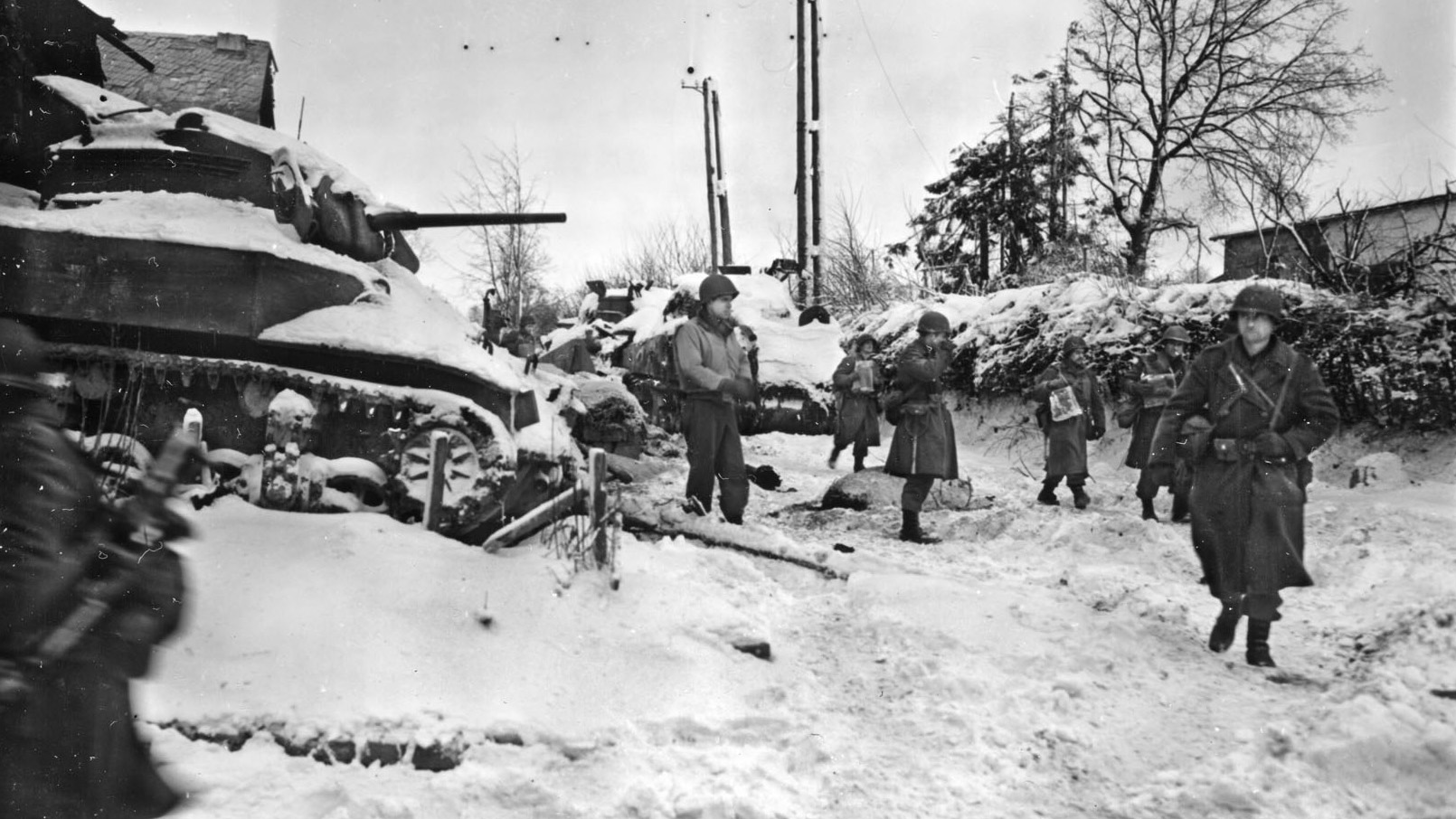
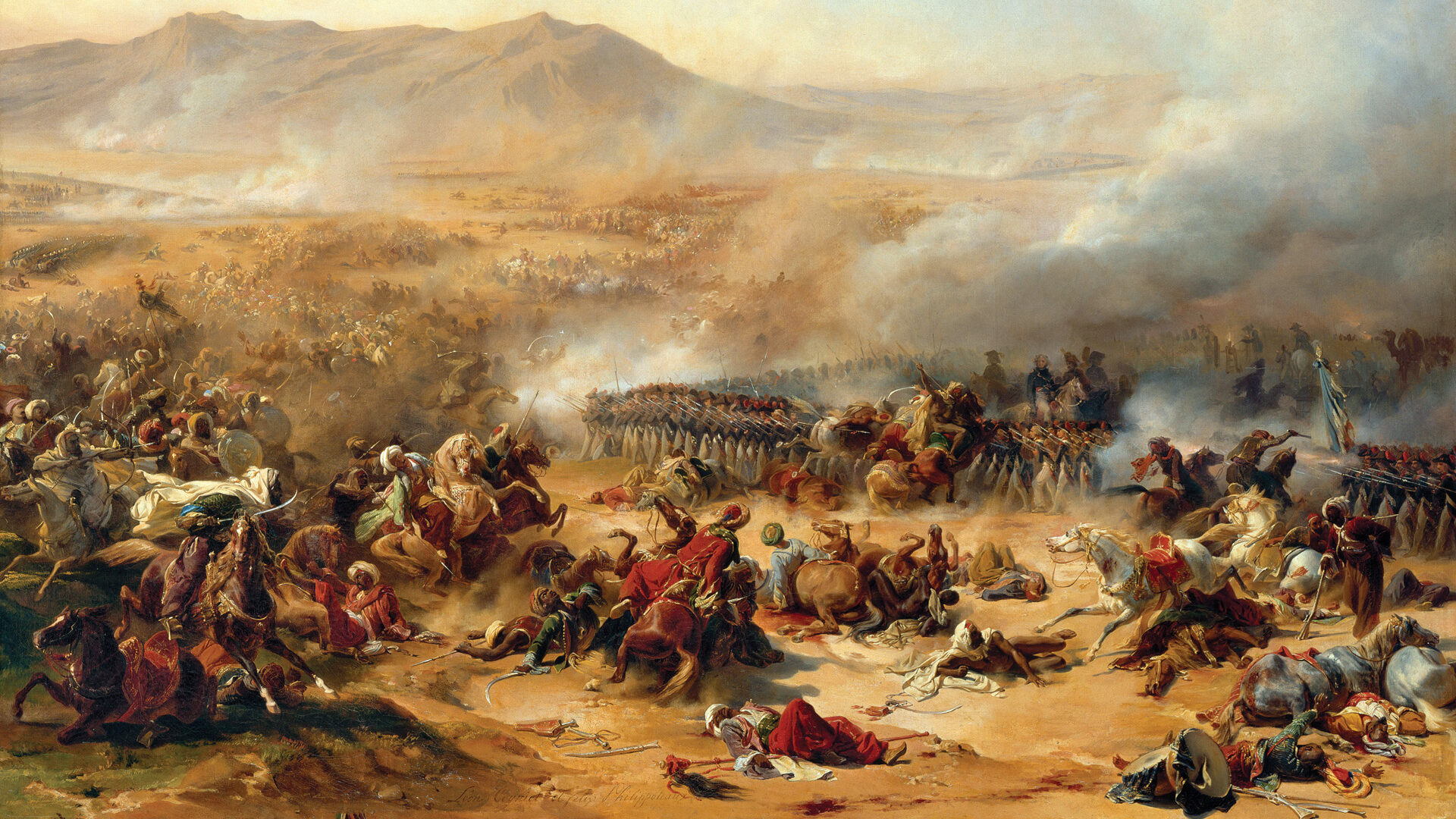
My father was a 48th Highlander and told me about meeting with the 1st Parachute div. in Ortona. I think I understand why my dad enjoyed a big family Christmas after his Christmas in Ortona.
I will be visiting Ortona next April, something I promised myself to do after hearing and reading so much.